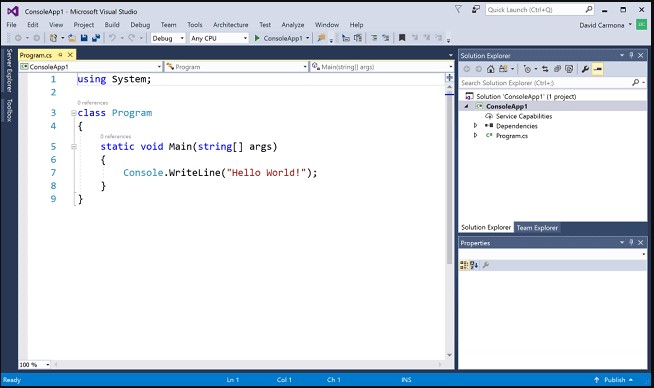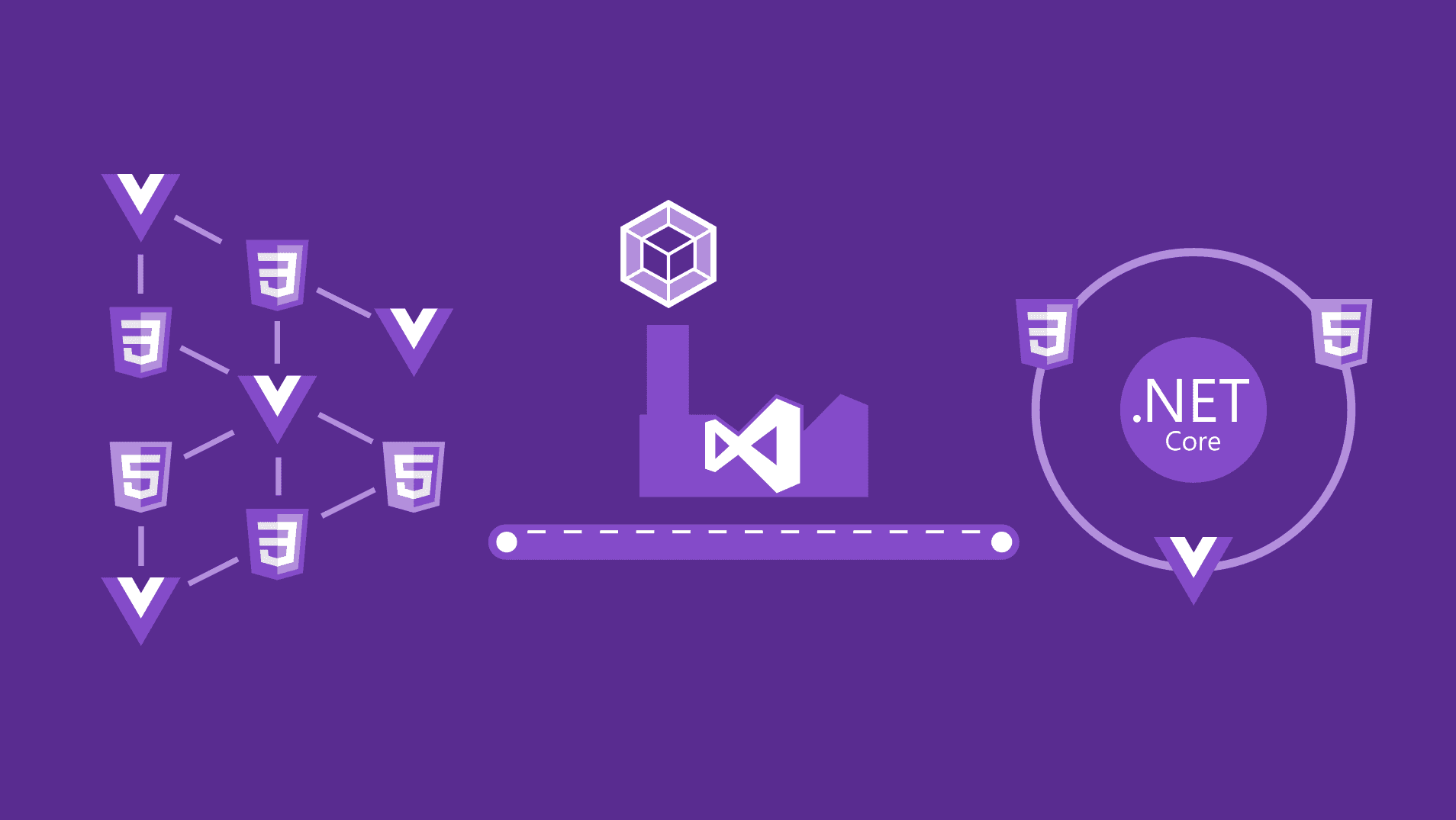If you’ve been using Windows for a long time, you’ve probably heard of Microsoft’s .NET, maybe because an application asked you to install it, or you saw it in your list of installed programs. me. Unless you are a developer, you don’t need a lot of knowledge to use it, as long as it works. But if you are interested in knowing everything, let’s explore what .NET is and why so many applications need it in the following article.
What is .NET Framework?
The name “.NET Framework” can be a bit confusing. A framework (in programming) is really a collection of Application Programming Interfaces – Application Programming Interfaces (APIs) and a shared code library, which developers can use when developing apps so they don’t have to write code from scratch. In the .NET Framework, that shared code library is named Framework Class Library (FCL). The bits of code in the shared library can perform all sorts of different functions. For example, a developer wants their application to be able to query another IP address on the network. Instead of writing the code themselves, and then writing all the bits and pieces to interpret the meaning of the query results, they can use code from the library that implements that function.
Advertisement

That’s just a small example. The .NET Framework contains tens of thousands of pieces of code. These code snippets make the developer’s job much easier, because they don’t have to write code from scratch for some common functions on the application. Instead, they can focus on writing their own application-specific code and the user interface that ties it all together. Using a code-sharing framework like this also helps to set some standards between applications. Other developers can more easily understand what a program is doing, and application users can see things like dialog boxes. Open and Save As works the same in different applications.
Advertisement
Why is the name framework confusing?
Because in addition to functioning as a framework of shared code, .NET also provides an environment for running applications. The runtime environment provides a virtual machine-like sandbox where applications will run. Many development platforms offer the same thing. For example, Java and Ruby on Rails both provide their own application runtime environment. In the .NET world, the environment for running the application is named the Common Language Runtime (CLR). When a user runs an application, the code for that application is actually compiled into machine language at run time and then executed. The CLR also provides a number of other services, such as memory and processor management, program exception handling, and security management. The runtime environment is actually a way of getting the app from the actual hardware it’s running on.

Advertisement
There are several advantages when applications operate within an application-specific environment. The biggest plus is portability. Developers can write code using any supported language, including popular programming languages like C#, C++, F#, Visual Basic, and several dozen others. The code can then be run on any hardware for which .NET is supported. Although the platform is designed to support hardware, not Windows computers. However, its proprietary nature leads to it being mostly used for Windows applications.
Microsoft has implemented .NET in several ways to help solve this problem. Mono is a free and open source project, designed to provide compatibility between .NET applications and other platforms, especially Linux. The .NET Core implementation, which is also a free and open source framework, is designed to bring lightweight modular applications to multiple platforms. .NET Core is designed to support Mac OS X, Linux, and Windows (including support for popular Windows platform applications).
As you can imagine, a framework like .NET can bring real benefits, on the development side of things. It allows developers to write code in their preferred language and ensures that the code can run wherever the framework is supported. Users benefit from consistent applications, and the fact that many applications may not be developed, if developers do not have access to the framework.
How is .NET installed on the system?
The .NET Framework has a somewhat complicated history, and it has had many versions over the years. Usually, the latest version of .NET is included with each new release of Windows. .NET versions are backwards compatible (so an application written for version 2 can run on version 3), but it doesn’t perform as well as it did on the previous version. Not all apps work with newer versions. In particular, on systems running Windows XP and Vista, you often see many different versions of .NET installed on your PC.
There are basically three ways that any particular .NET Framework version will be installed:
- Your version of Windows may already have the .NET Framework in its default installation.
- An application that requires a specific version can install the .NET Framework during the installation of that application.
- Some applications will even redirect you to a separate download site to obtain and install a specific version of the .NET Framework.
Fortunately, things get easier in modern versions of Windows. During the “golden age” of Windows Vista, two important things happened. First, the .NET Framework 3.5 was released. That version has been redesigned, including components from versions 2 and 3. Apps that require earlier versions will still work if you install version 3.5. Second, the upgrade to the .NET Framework has finally begun to be delivered through Windows Update.
Taken together, these two mean that developers can now rely heavily on users – who have the appropriate components pre-installed and no longer have to ask users to make settings. additional order.
When Windows 8 came out, there was a completely redesigned .NET Framework version 4 with it. Version 4 (and later) does not feature backward compatibility with earlier versions. It is designed so that it can run side-by-side with version 3.5 on the same PC. Apps written with version 3.5 or below will require version 3.5 to be installed, and apps written for version 4 and up will need version 4 installed. The good news is that users don’t really have to worry. about those settings. Windows will handle it all for you.
Windows 8 and Windows 10 include versions 3.5 and 4 (current latest version is 4.6. When installing an application, it will need one of those versions, and Windows will automatically add the .NET Framework. You can manually add them to Windows by accessing optional Windows features. You have the option to add version 3.5 and version 4.6 separately.
That is to say, there is no real reason to manually add them to your Windows installation, unless you are developing applications. The first time you install an app, you’ll need one of the available versions, and Windows will automatically add it for you.
What to do if you have problems with .NET?
You probably won’t have problems with .NET on current versions of Windows. Since both required versions are included with Windows and installed as needed, the installation of the application is quite seamless. On older versions of Windows (like XP and Vista), you often have to uninstall and reinstall different versions of .NET. You must also go through rounds of testing to ensure that the right .NET versions are installed for the applications that need them. Now, Windows will handle those for you.
That is to say, if you have a problem and you think it is related to the .NET framework, there are a few steps you can take.
First, you should make sure that Windows has all the latest updates. If an update of the .NET Framework is available, that might be the way to solve your problem. You can also try removing the .NET Framework versions from your computer and then re-adding them. If neither of those steps work, you can try scanning for corrupted system files in Windows. This process does not take much time and can recover damaged or lost system files.

If the above doesn’t work, try downloading and running Microsoft’s .NET Framework Repair tool. This tool supports all current versions of the .NET Framework. It helps you troubleshoot common problems with setting up or updating to the new .NET and can automatically fix any issues you encounter.
Above is all information about .NET Framework TechtipsNReview.com want to mention in this article. If you are a Dev, then surely a basic knowledge of .NET core is an important thing. Currently, the market is very fond of Web using .Net because of its quickness and convenience in Build. Hope they will be useful to you!
According to Howtogeek.com
Source: What is the .Net Framework and why do some software need it?
– TechtipsnReview






